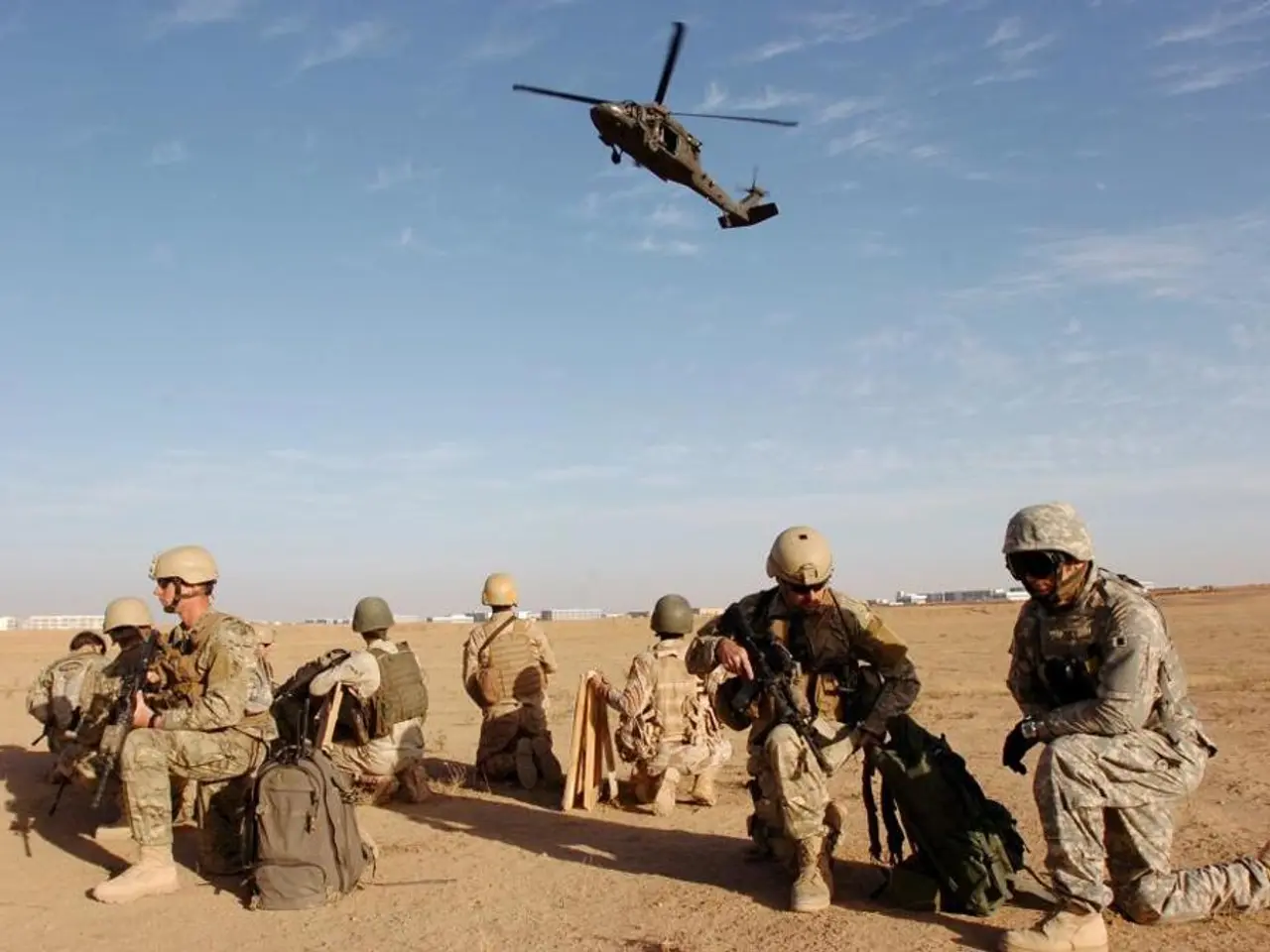Counteracting Drones: Essential Infrastructure for Combating Unmanned Aerial Vehicles
In the ongoing battle against unmanned aircraft systems (UAS), the Department of Defense (DoD) is leveraging advanced technologies to enhance its counter-UAS (C-UAS) capabilities. At the heart of this transformation are sensor fusion and network architecture, which are critical in enabling effective detection, tracking, and neutralization of drone threats across the battlefield.
Sensor fusion, the integration and real-time analysis of data from multiple sensor types, plays a pivotal role in this endeavour. By combining information from radar, electro-optical/infrared (EO/IR), radio frequency (RF), acoustic, and electronic warfare (EW) sensors, comprehensive domain awareness is achieved. This allows for rapid threat identification, precise classification, and timely response, providing forces with clearer, consolidated information without cognitive overload.
Network architecture, on the other hand, ensures seamless data and command-and-control (C2) functions across platforms, units, and command echelons. By moving beyond siloed, bespoke systems, sensors and effectors can interoperate on a common, layered network—from tactical to strategic levels. This architecture supports distributed C2, enabling more flexible, scalable, and coordinated responses.
Together, these elements underpin a "stitching" culture, where various sensor inputs and countermeasures are interconnected into a holistic system rather than operating as isolated solutions. This approach is crucial given the rapid proliferation and tactical diversity of UAS threatening DoD assets.
Practical implementations include mobile ground vehicle platforms equipped with fused sensor suites and networked C2 nodes, providing high-fidelity situational awareness and enabling rapid, coordinated counter-UAS operations. AI-assisted detection and classification systems further enhance performance in realistic operational conditions.
However, challenges remain. Establishing a robust transport to connect diverse sensors and effectors into a unified network is a foundational challenge. The DoD needs to prescribe a common C2 system across all services and implement the network architecture needed to share sensor and effector data efficiently across different units and domains, thus overcoming legacy, siloed, hub-and-spoke networks incapable of joint integrated defense.
Inconsistent track IDs also pose a significant challenge, as they break the chain of custody between sensors and effectors, making coordinated defense guesswork and preventing weapons from being paired to intercept. In an ideal network, a drone detected by a forward-deployed squad sensor should carry the same track number as when it is sensed by brigade, division, or joint-level assets.
Major Anthony Padalino, the executive officer to the US Army chief technology officer, is driving operational integration of sensors, effectors, and C2 in the Army's ongoing C-UAS strategy. To start down the path to success, the DoD should take immediate actions such as selecting a common C-UAS C2 for all services, creating open-source APIs, ensuring a pub/sub engine at the edge, prioritizing remote sensor tasking, and emphasizing remote fire control and engagement.
In conclusion, sensor fusion is the technological bedrock for transforming raw, multi-source sensor data into actionable intelligence, while network architecture is the structural backbone that enables that intelligence and corresponding countermeasures to be shared, coordinated, and executed across distributed DoD forces. This combined approach is essential to counter modern, proliferating drone threats effectively. The power of sensor fusion and network architecture is demonstrated in the efficient sharing of drone detection and destruction information. Victory in the C-UAS fight will go to the side that builds faster, more integrated networks—where any sensor can feed a common operational picture and any shooter can act on it.
- The military industry is investing heavily in advanced technologies for reconnaissance, such as drones, to enhance its defense strategies.
- In the world of personal-finance and wealth-management, cybersecurity has emerged as a crucial aspect of business, with data-and-cloud-computing being a significant focus.
- The NFL, a major part of American-football, is using drones for strategic analysis and sports performance tracking.
- The Department of Defense (DoD) is leveraging sensor fusion in its counter-UAS (C-UAS) efforts, combining data from various sensor types for comprehensive domain awareness.
- Network architecture is essential for seamless data and command-and-control functions across platforms and command echelons, facilitating distributed C2 and coordinated responses.
- The rapid proliferation of UAS threats demands a holistic, "stitching" approach, where sensor inputs and countermeasures are interconnected into a unified system.
- In the ongoing C-UAS strategy, the Army is focusing on operational integration of sensors, effectors, and command-and-control, with Major Anthony Padalino leading this effort.
- Establishing a unified network architecture is a foundational challenge, requiring the DoD to prescribe a common C2 system across all services and ensure efficient sharing of sensor and effector data.
- To counter modern drone threats effectively, it's essential to build faster, more integrated networks, where any sensor can feed a common operational picture and any shooter can act on it—much like the integration and coordination happening in various sectors of society and industry.




